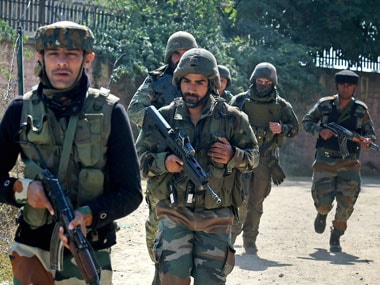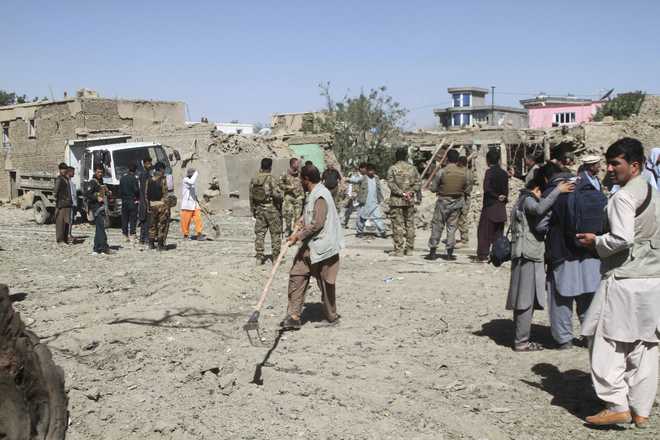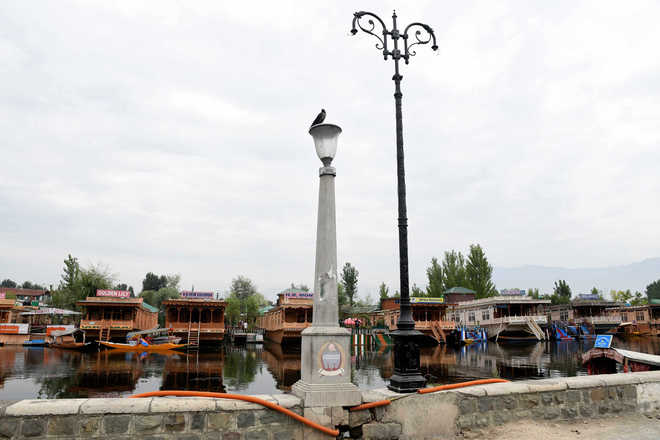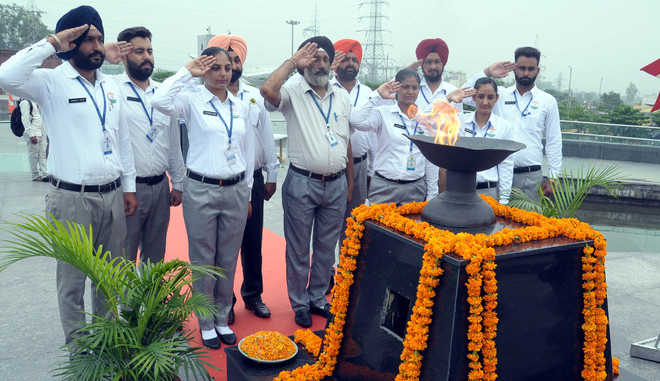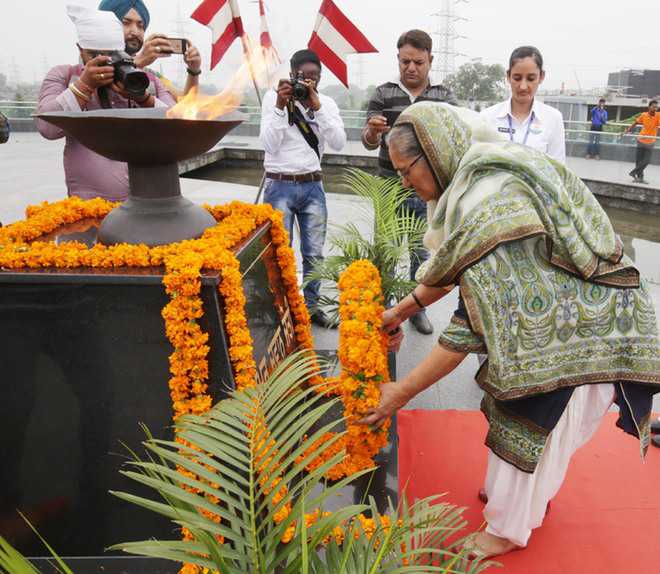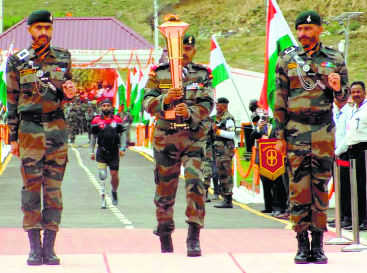Annual-Report-MOD
Indian Navy Sailor Matric Recruit (MR) Notification – April 2020 Batch
ndian Navy Sailor Matric Recruit (MR) Notification – April 2020 Batch: Online applications are invited from unmarried male candidates (who fulfill eligibility conditions as laid down by the Government of India) for enrolment as sailors for 400 vacancies (Approximately) for Matric Recruit (MR) – Apr 2020 batch. Educational Qualifications: Candidate must have passed Matriculation Examination from the Boards of School Education recognised by MHRD, Govt. of India.
- Chef: They would be required to prepare food as per menu (both vegetarian and non-vegetarian including handling of meat products) and accounting of ration. In addition, they will also be allotted other duties as per Service requirement.
- Steward: They would be required to serve food in the officers‟ messes, as waiters, housekeeping, accounting of funds, wine and stores, preparation of menu etc. In addition, they will also be allotted other duties as per Service requirement.
- Hygienist: They will be required to clean washroom, shower spaces and other areas. In addition, they will also be allotted other duties as per Service requirement.
Age: Candidates should be born between 01 Apr 2000 to 31 Mar 2003 (Both dates inclusive).
Pay & Allowances: During the initial training period, a stipend of Rs. 14,600/- per month will be admissible. On successful completion of initial training, they will be placed in Level 3 of the Defence Pay Matrix (₹ 21,700- ₹69,100). In addition, they will be paid MSP @ ₹ 5200/- per month plus DA (as applicable).
Promotion: Promotion prospects exist up to the rank of Master Chief Petty Officer-I, i.e. Level 8 of the Defence Pay Matrix (₹ 47,600- ₹ 1,51,100) plus MSP @ ₹ 5200/- per month plus DA (as applicable). Opportunities for promotion to commissioned officer also exist for those who perform well and qualify the prescribed examinations.
Perquisites: (a) During the entire period of training and thereafter, sailors are given books, reading material, uniforms, food and accommodation as per entitlement. (b) Sailors are entitled to medical treatment, Leave Travel Concessions for self and dependents, Group Housing Benefits and other privileges. Sailors are also entitled to Annual and Casual Leave, Children Education and House Rent Allowances. Post-retirement benefits include pension, gratuity and Leave encashment. All perquisites are extended as per service conditions and their eligibility/admissibility is regulated as per Government orders in force and amended from time to time.
SELECTION CRITERIA: Selection of recruits is based on State wise merit of their performance in Computer-based Examination, subject to qualifying Physical Fitness Test (PFT) and fitness in Medical Examinations.
Computer-based Examination
- The question paper will be computer-based with a total of 50 questions, each carrying 01 marks.
- The question paper will be bilingual (Hindi & English) and objective type (multiple-choice).
- The question paper will comprise of two sections i.e. Science & Mathematics and General Knowledge.
- The standard of the question paper will be that of class 10th syllabus & sample papers for the examination are available on website www.joinindiannavy.gov.in.
- Duration of examination will be 30 minutes.
- The candidates are required to pass in all sections and in aggregate. The Navy reserves the right to determine the pass marks in each Section and in aggregate.
- Penalty for Wrong Answer: Candidates should note that there will be penalty (Negative Marking) for wrong answers marked by a candidate in the question paper. There are four alternatives for the answer to every question. For each question for which a wrong answer has been given by the candidate, one fourth (0.25) of the marks assigned to that question will be deducted as penalty.
Physical Fitness Test (PFT)
- Qualifying in Physical Fitness Test (PFT) is mandatory for selection.
- PFT will consist of 1.6 Km run to be completed in 7 minutes, 20 squat ups (Uthak Baithak) and 10 Push-ups. Candidates undergoing PFT will do so at their own risk.
Medical Standards
- Medical examination will be conducted by authorised military doctors as per medical standard prescribed in current regulations applicable to sailors on entry.
- Minimum height 157 cms. Weight and Chest should be proportionate. Minimum chest expansion of 5 cms. Details regarding minimum height standards for entry into the Indian Navy as Sailors, including applicable relaxations, can be accessed from the official recruitment website.
- The candidate must be in good physical and mental health, free from any defect likely to interfere with the efficient performance of duties both ashore and afloat under peace as well as war conditions as per Navy Order (Special) 01/2008. Extract of the Navy Order can be accessed from the official Indian Navy recruitment website.
- Preliminary Medical Examination for recruitment will be considered only “Provisionally fit subject to fitness in the final medical examination”. Final Enrolment Medical Examination of all selected candidates will be done at INS Chilka. Candidates who are found medically fit in Final Enrolment Medical Examination will be enrolled. Candidates who are found medically unfit will be advised to appeal against its findings, if they so desire, at INHS Kalyani, Visakhapatnam within a maximum period of 21 days.
Note:- Candidates are advised to get their ears cleaned for wax, and tartar removed from teeth prior to medical examination.
SELECTION PROCEDURE
Examination Fee: Candidates (except SC/ST candidates, who are exempted from payment of fee) are required to pay a fee of Rs. 205/- (Rupees Two hundred five only) through online mode by using net banking or by using Visa/ Master/ RuPay Credit/ Debit Card/ UPI. Admit Card for the online examination will be issued to those candidates who have successfully submitted the application and examination fee or are entitled to waiver off examination fee.
- The applications are to be filled online only on website www.joinindiannavy.gov.in and all required documents in original are to be scanned and uploaded.
- Candidates have to choose any two locations for online examination, as per their convenience. Candidates can be allotted any location view administrative reasons. Examination centre cannot be changed once selected by the candidate or allotted by the Indian Navy. Call up Letters cum Admit Card for online examination indicating date, time and place, which are scheduled during Sep 2019, would be required to be downloaded from the official website www.joinindiannavy.gov.in tentatively by one week before examination. Only Electronic mode of communication will be used while contacting the candidates at all stages of recruitment.
- The original documents uploaded by the candidates during online filling of application viz original certificates, mark sheets, Domicile certificate and NCC certificate (if held) are to be brought by the candidates at all stages of recruitment (Written Examination, PFT and Final Enrolment Medical at INS Chilka). If the details provided in „online application‟ are not matching with original documents at any stage, the candidature will be cancelled.
- Results of the online examination will be announced tentatively after 30 days. Approximately 1600 candidates will be called for PFT and Preliminary Recruitment Medical Examination. Allocation of centres for PFT and Preliminary Recruitment Medical Examination will be at the discretion of the Indian Navy. The qualifying cut off marks for appearing in PFT & Preliminary Recruitment Medical may vary from State to State for MR entry.
- Candidates who are qualified in PFT will undergo Preliminary Recruitment medical examination. Candidates declared Temporary Medically Unfit in the Preliminary Recruitment medicals can avail specialist review from the specified Military Hospital within a maximum period of 21 days. No further review/ appeal is permissible if declared unfit in the specialist review.
- Candidates declared Permanent Medically unfit in the Preliminary recruitment medical can appeal for specialist opinion in a Military Hospital on payment of Rs 40/- by Military Receivable Order (MRO) on Government Treasury within 21 days. Medical fitness certificate other than that of the specialist opinion in a Military Hospital will not be considered. No further review/ appeal is permissible.
- A State wise merit list will be published for candidates who have passed in PFT and Preliminary Recruitment Medical Examination depending upon vacancies. In case of candidates securing similar cut off marks in Computer Based Examination, the candidate with higher percentage in the qualifying examination i.e 10th will be selected for Final Enrolment Medicals at INS Chilka.
- The merit list will be available on website www.joinindiannavy.gov.in on 21 Feb 2020. All selected candidates will be called to INS Chilka for Final enrolment medicals. The selection of a candidate will stand cancelled and he will have no claim for enrolment in the Indian Navy in case the candidate fails to report on the date and time mentioned in call letter for final enrolment medical examination at INS Chilka. However, enrolment will be subject to Fitness in Final Enrolment Medical at INS Chilka.
- The candidate‟s selection pertaining to a particular batch is valid for that batch only. Qualified candidates whose names do not appear in the merit list cannot claim admission for the next batch. These candidates will have to undergo the selection procedure afresh, provided they meet the eligibility criteria for the fresh batch.
- All select listed candidates will be required to download Police Verification form and other associated forms along with the Call letter for Final Enrolment Medical Examination at INS Chilka. The candidates will be required to submit the same to INS Chilka after getting their antecedents verified on Police Verification form / Online police verification form from the Superintendent of Police of their respective jurisdiction. Candidates without the verified police verification reports or reports with adverse comments will not be eligible for enrolment. The format for the police verification form can also be downloaded from the website www.joinindiannavy.gov.in immediately after the declaration of select list, to ensure timely verification.
- No enquiry will be entertained regarding this recruitment/ enrolment after a period of six months.
HOW TO APPLY
- For this entry, the candidates can apply ONLINE ONLY on the official website www.joinindiannavy.gov.in from 26 Jul 19 to 01 Aug 19.
- Before filling online application, keep matric certificate & Mark sheet ready for reference.
- Register yourself on www.joinindiannavy.gov.in with your e-mail ID, if not registered already. The Applicants must ensure that while filling their Application Form, they are providing their valid and active e-mail IDs and mobile numbers.
- „Log–in‟ with the registered E-mail ID and Click on “Current Opportunities”.
- Click on “Apply” (√) button.
- Fill up the Form completely. Before clicking the „Submit‟ button make sure all the details are correct, all required documents are scanned in original & uploaded.
- Admit Card will be generated for only those candidates who have submitted the online application and have made the payment of examination fee or are entitled to waiver off examination fee.
- Candidates who have submitted the application on the last date of application submission, will get one additional day, to make payment of fees. Candidates who fail to make the payment even on the additional day will not be given further chance and hence their application will be cancelled.
- Photographs. THE PHOTOGRAPH TO BE UPLOADED SHOULD BE OF GOOD QUALITY WITH BLUE BACKGROUND.
In case of any difficulty faced by potential candidates they may contact IHQ MoD (Navy) through website www.joinindiannavy.gov.in.











